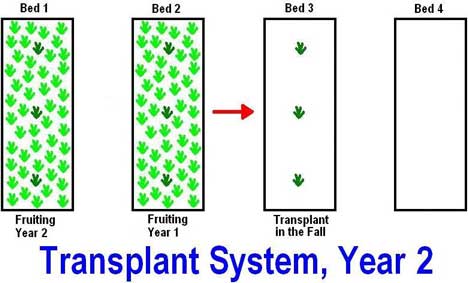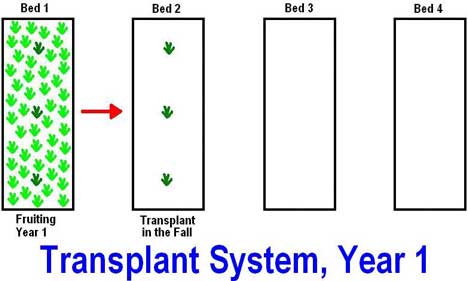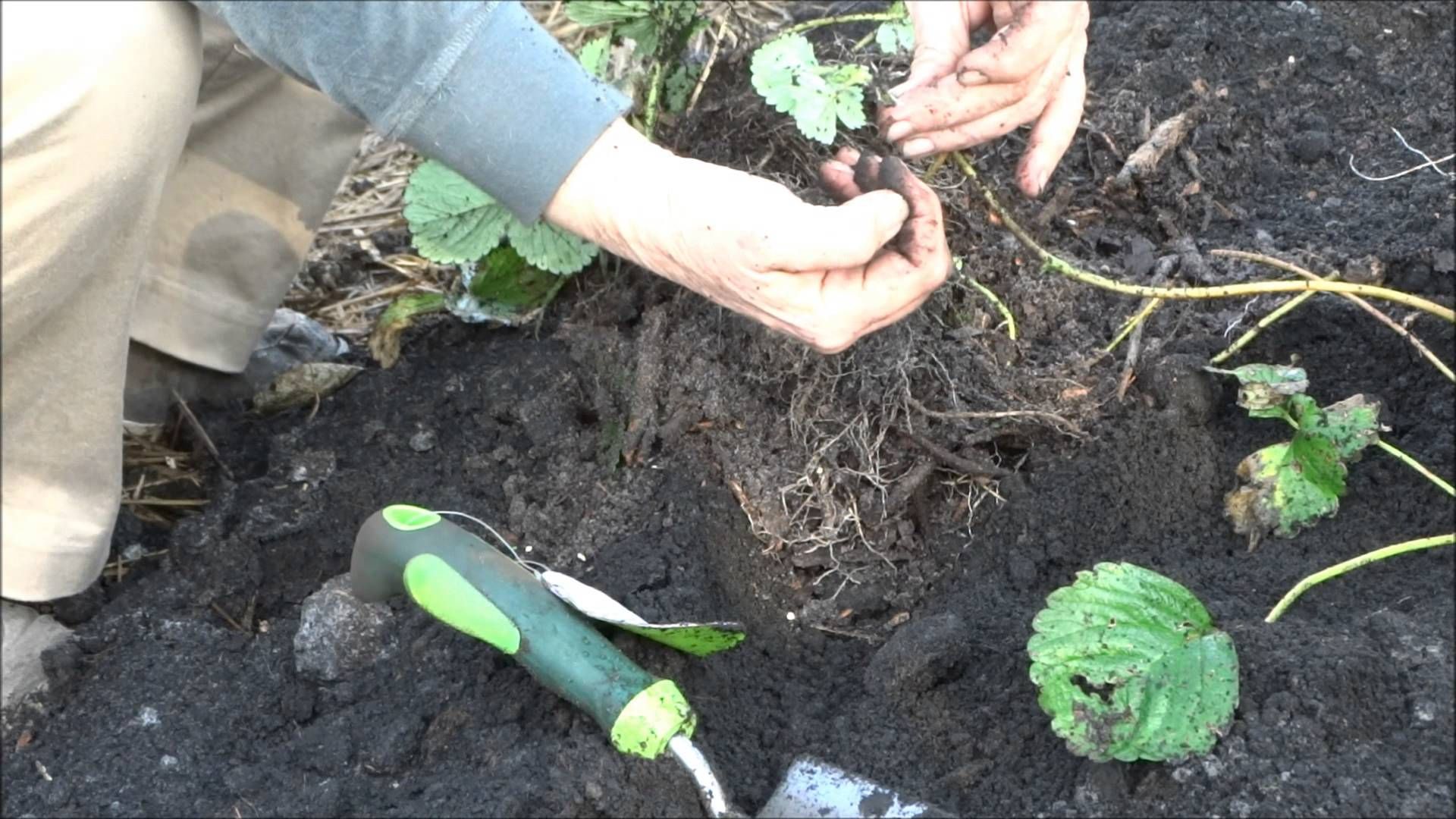Strawberries are a delicious and rewarding crop to grow in the home garden. As a perennial fruit, strawberry plants will return and produce fruit year after year when cared for properly. An important part of caring for strawberries is knowing when to transplant them to maintain healthy, productive plants. With a little planning and preparation, transplanting strawberries in the fall can be a viable option.
Why Transplant Strawberries?
Strawberries spread by sending out runners that form new baby plants. Over time, a strawberry bed can become overcrowded leading to diseases and reduced fruit production as plants compete for space and nutrients. Transplanting helps
- Prevent overcrowding
- Refresh older plants
- Expand your strawberry patch
- Share plants with others
Typically, strawberries are transplanted in early spring or late summer/early fall. Spring and fall provide cooler temperatures ideal for transplanting.
Is Fall Transplanting Recommended?
Fall is not the ideal time to transplant strawberries. Early spring is preferred to give plants time to establish before summer’s heat. However, transplanting in fall can work if done properly. The advantages of fall transplanting include:
- Avoiding spring frost damage to new transplants
- Getting a head start on spring growth
- Opening up space in current beds for remaining plants
The main disadvantage is the short window plants have to establish roots before winter dormancy Careful timing and preparation are crucial for success
When to Transplant Strawberries in Fall
Timing is key when fall transplanting strawberries. Some important factors to consider:
-
First frost date: Transplant at least 6-8 weeks before your average first frost to allow enough root growth before dormancy.
-
Plant health: Don’t transplant stressed or diseased plants. Select only vigorous, healthy runners.
-
Soil temperature: Ideally below 70°F. Shoot for September or October depending on your climate.
-
Day length: Shorter fall days signal plants to prepare for dormancy. Transplant early enough to allow adequate establishment.
-
Plant age: Prioritize young runner plants over older mother plants, which transplant poorly in fall.
-
Regional climate: Adjust timing appropriately for your area. Warm climates may allow later transplanting than colder climates.
How to Transplant Strawberries in Fall
Follow these steps for the best results:
-
Start by selecting only healthy, non-flowering runner plants. Avoid stressed or diseased plants.
-
Prepare beds in advance with compost and balanced fertilizer to enrich soil. Space plants 12-15 inches apart in rows.
-
Water plants well 1-2 days before digging. Dig up carefully to keep roots intact.
-
Transplant in the evening or on a cloudy day to reduce stress. Plant at same depth as before.
-
Water transplants daily for the first week, then weekly if rainfall is lacking.
-
Apply 2-3 inches of mulch after transplanting to insulate plants if freezing occurs. Leave crown exposed.
-
Remove any flowers or runners the transplants produce to direct energy to root growth.
-
In very cold regions, temporarily cover beds with fabric row covers for added protection. Remove covers in spring after final frost.
Caring for Fall Transplanted Strawberries
To help fall-transplanted strawberries establish and survive winter:
-
Water regularly until ground freezes. 1-2 inches per week.
-
Apply balanced fertilizer again 4-6 weeks after transplanting to promote rooting.
-
Monitor for pests like slugs or snails that can damage young plants. Control as needed.
-
Cover beds with evergreen boughs or straw to insulate plants when hard freezes begin.
-
Check for heaving of plants during freeze/thaw cycles. Gently replant any heaved plants.
-
Remove mulch in spring once freezing temperatures have passed.
-
Resume regular watering and fertilizing as plants emerge from dormancy and begin new growth.
Results to Expect After Fall Transplanting
With proper timing and care, fall transplanted strawberries can become well-established before winter dormancy. However, due to the shorter rooting period, you may see:
-
Higher overwintering losses, especially in cold climates
-
Smaller, weaker plants entering spring compared to spring transplants
-
Potential reduction in flowers and fruits the first spring after transplanting
-
Healthy runner development starting the second year after transplanting
So be patient! Although yields may suffer initially, fall transplanted strawberries can rebound and thrive in the years after once fully established.
The Key to Successful Fall Transplanting
More than any other factor, generous watering is vital to the success of fall strawberry transplants. Adequate moisture allows young roots to develop and strengthen before winter dormancy. Drip irrigation can be ideal to ensure consistent watering.
Avoid transplanting in fall if you are unable to commit to diligent watering through plant establishment. Likewise, take extra precautions with fall transplanting if winters in your area are unusually cold or dry.
Should You Transplant Strawberries in Fall?
While not ideal, transplanting strawberry plants in the fall can work well if done at the right time with attentive follow-up care. If your circumstances necessitate fall transplanting, focus on selecting only the healthiest runners and preparing your soil in advance. Most importantly, diligent watering through fall and winter is key to keeping plants alive and promoting root establishment before dormancy. With some extra TLC, your fall-transplanted berries can thrive and produce bountiful fruits for years to come.
Year 2: Two Fruiting Strawberry Beds, Another Fall Transplant
In the second year of the system, the transplant strawberries in bed 2 will send out runners in their first year of fruiting. Since these are the plants’ second fruiting year, the strawberry plants in bed 1 should have a good crop. You may need to thin the runner strawberry plants in bed 1 if they become too thick. In the fall, transplant strawberry runner plants from bed 2 to a new bed (bed 3). Overwinter all beds again.

Year 1: Transplant Strawberry Plants from Established Bed
If you bought strawberry plants at a local nursery or online and planted them in the spring, the strawberry bed probably won’t be established and in “Fruiting Year 1” until the spring after that. Take some of the healthy, well-established strawberry runner plants and move them to a new bed (bed 2) in the fall after the first fruiting year. This is the first year of the strawberry transplanting cycle. Take care of your beds and winterize them as described on the Growing Strawberries page (link above).

Easily Transplanting/Moving & Fertilizing Strawberry Plants Late Fall: Just Dig Them Up & Move Them
FAQ
How do you transplant strawberries without killing them?
Can strawberry plants be planted in the fall?
When is the best time to transplant strawberries?
Fortunately, strawberry plants give you an easy way to keep two and three year old plants in your patch. Each year, they send out runners with baby plants on them. You can use these babies to repopulate your patch with new plants. The best time to transplant strawberries is in early fall. — Suburban Hobby Farmer
Should you plant fall strawberry plants?
This helps the plants establish more quickly than bareroot plants and helps minimize the number of plants that die (more plugs survive than do shipped and planted bareroot plants). Hopefully, those strawberry gardeners with an inclination toward planning will realize the benefits of planting fall strawberry plants.
Can strawberries be transplanted?
It can be done either by thinning the plants or transplanting the plants to a new area. Also, if the soil isn’t particularly well-suited for growing strawberries, transplanting strawberry plants to a rich, sandy loam with good drainage can make all the difference in the world.
How long does it take to transplant a strawberry plant?
Step 5: Let the daughters root into the pots. This should take about eight weeks. It’s best to start in spring or early summer. This way, the daughter plants will be available to plant in early fall. The best time to transplant strawberries is in early fall.
- The Ultimate Guide to Growing Strawberries in Raised Beds - August 8, 2025
- No-Dig Garden Beds: The Easiest Way to Grow a Beautiful Garden - August 6, 2025
- How to Protect and Preserve Wood for Raised Garden Beds - August 6, 2025

